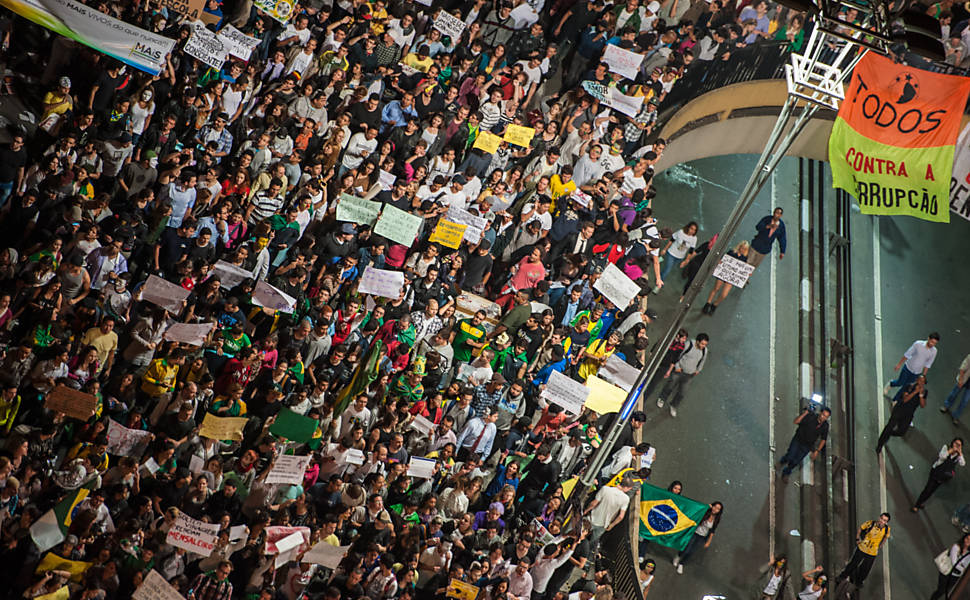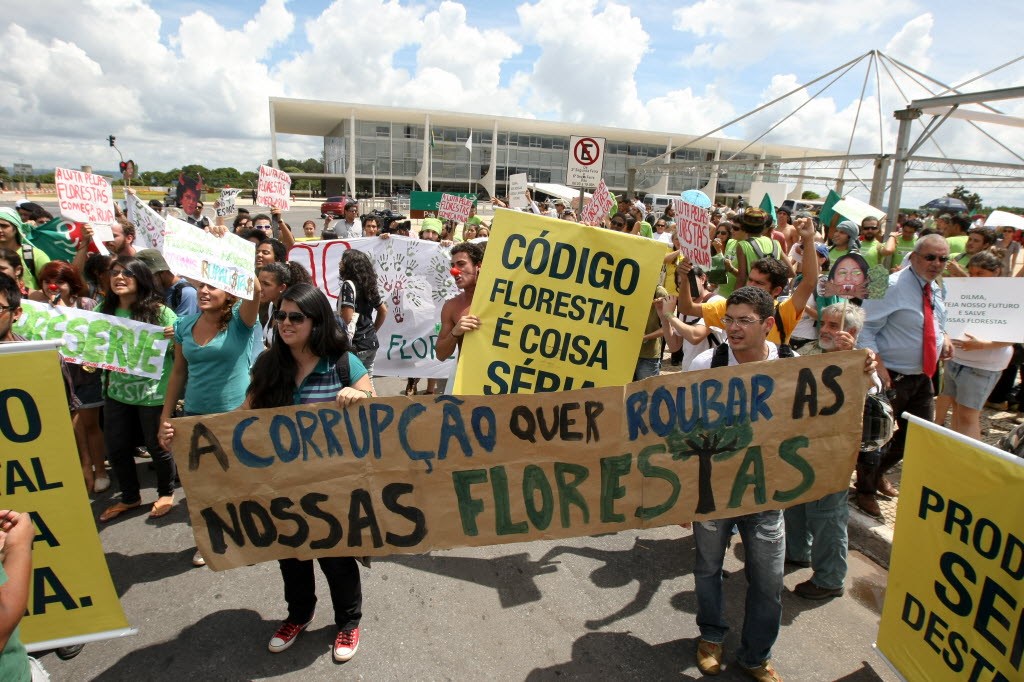
If there is anyone who has benefited directly from the energy that exploded in Brazil last year, it is likely wildcard environmentalist candidate Marina Silva, who was seen as an outsider. But the complicated ‘protest movement’ changed much more than that, even as it remains to be seen whether any of its slogans can be transformed into concrete political outcomes.
Mauricio Savarese
São Paulo
How much did the protests of 2013 affect one of the most exciting presidential races of Brazil’s young democracy? It may take decades to really understand what happened last June.
But we can see two things quite clearly. One the one hand, despite huge public relations crises, Brazil’s military police have actually emerged stronger than they were a year ago. On the other hand, there is Marina Silva. As an outsider, she was one of the few politicians to be spared the wrath of the protesters, and polls at the time showed she was a favorite candidate among demonstrators. Some thought this support might subside, but it has not. Many of those who supported the protests still view her favorably
Will that mean a victory for the environmentalist on October 26? It’s too early to say. But watching the campaign unfold so far has made it clear that all of Brazil’s political parties need to regroup and reorganize to restore credibility post-2013, no matter how loudly they proclaimed support for the wave of protests.
Let’s go back in history.
On June 13th, 2013, average Brazilians paid close attention to a protest for the first time in two decades. Ratings were so high that TV channels broadcast the demonstrations live for hours. The fourth demonstration organized by the Free Fare Movement (MPL in Portuguese), on June 11, brought only a few thousand people onto the streets, but observers and protesters were shocked by the violent and abusive reception the police gave them. It wasn’t that the police hadn’t done it before. But they’d never done to wealthy college students what they routinely to in Brazil’s poor neighborhoods.
A group of 20 elite policemen started it all on the corner of Rua Maria Antônia and Consolação [read Claire Rigby’s first-hand From Brazil account from June 12th]. Militants, bystanders, journalists, elderly people going home or couples just having a beer at random bars were targeted in outrageous fashion.
The rest is history: the movement became massive, the media changed sides, police were under heavy pressure, and protests became part of Brazil’s political conversation…
All politicians had to brace themselves, and for quite a long time, with one big exception: Marina Silva, a woman who has been hailed a “force of nature” for all the trouble she has faced for her refusal to make political agreements. The hatred for Marina Silva in some political circles, especially in the ruling PT, is deep. She has been seen as impractical and arrogant, always willing to walk away from whatever party or agreement she was in at the moment if it no longer served her interests. For her enemies in Brasília, this has been extremely frustrating and a sign of her selfishness. But in the heady, revolutionary moment of June 2013, this could also be seen as evidence she was untainted by the dirty alliances of Brazil’s politics as usual.

Fast forward to June 13th 2014. The day after the World Cup opener, which had been threatened by anti-FIFA demonstrators, black bloc activists, unions mobilizations and so on. But as it turned out, in the larger World Cup narrative, a single protest on opening day was little more than a comma. Instead of hundreds of thousands of demonstrators, there was a group of 100 protesters struggling to get attention. They were only noticed because two journalists were injured – again, by careless São Paulo police. As the football extravaganza fully arrived, those who had been shouting “There will be no Cup” became a running joke.
But the craving for some change was still there. The actual street demonstrations were small, but the zeitgeist, largely favoring Marina Silva, was the same.
Five days after the protest that triggered it all in 2013, the MPL went down Paulista Avenue, São Paulo’s key artery, in a sort of celebration protest. Mayor Fernando Haddad had just given in on the 20 cent rise that had brought the first few thousands to the streets.
The idea was that MPL would go home for a while, since they had gotten what they wanted. But festivities soon turned into violence. The political confusion and the clash between protesters who wanted entirely different things was palpable. Leftists, right-wingers, anarchists, apolitical conservative ‘coxinhas,’ and even Neo-Nazis were involved. Since the protests had no leader, and since there was no longer a single issue to rally behind (the 20 cent bus far increase) people protested against everything. Anti-World Cup activists were few.
The desire for change was there, but it was also very difficult to grasp what kind of change people actually wanted, and how they could achieve it. All many protesters knew was that political parties were responsible for corruption and poor governance, especially when it came to public services.
Although Marina Silva had belonged to the Worker’s Party for a long time, her environmental agenda put here above that divide. That is why polls in 2013 already showed her as a strong challenger for the Presidency. But Marina Silva struggled to put her political party together. One that wouldn’t even have the word “party” in the name: Rede Sustentabilidade.
As the months went by, the World Cup topic became a less popular flashpoint. Marina Silva kept mostly quiet. Protesters still promised massive demonstrations during the tournament, but average Brazilians were tired of having their streets blocked. Those who sided with President Dilma Rousseff also understood that many were actually using the football fiesta as a vehicle to attack the incumbent.
These moderate leftists were the first to leave the massive protests and to be vocally critical to them. After a while, others decided not to be mistaken for supporters of the controversial (and dangerous) black bloc activities. But although protesters decided to stay home, Marina Silva went up in the polls without saying much. She was supposed to galvanize their hopes and put forward an agenda that somehow reflected their grievances. After she failed to found political party, those protesters immediately became undecided voters. After Silva joined Eduardo Campos in his ticket, many thought that the June movement, at least in terms of actual politics, was completely over.
A jet crash changed all of that.
In a way, Marina Silva’s presidential campaign will show whether the June protests were a beginning for something truly organic in Brazil’s political life or just an accident in the middle of a very long and boring road. Polls show there is not a wave towards her, as some thought, but there is still a strong standing for an anti-establishment presidential candidate who rose for looking untraditional. Doubts will be on till October 26, since her main base were great at the dress rehearsal, but were far from delivering when the main event took place.

